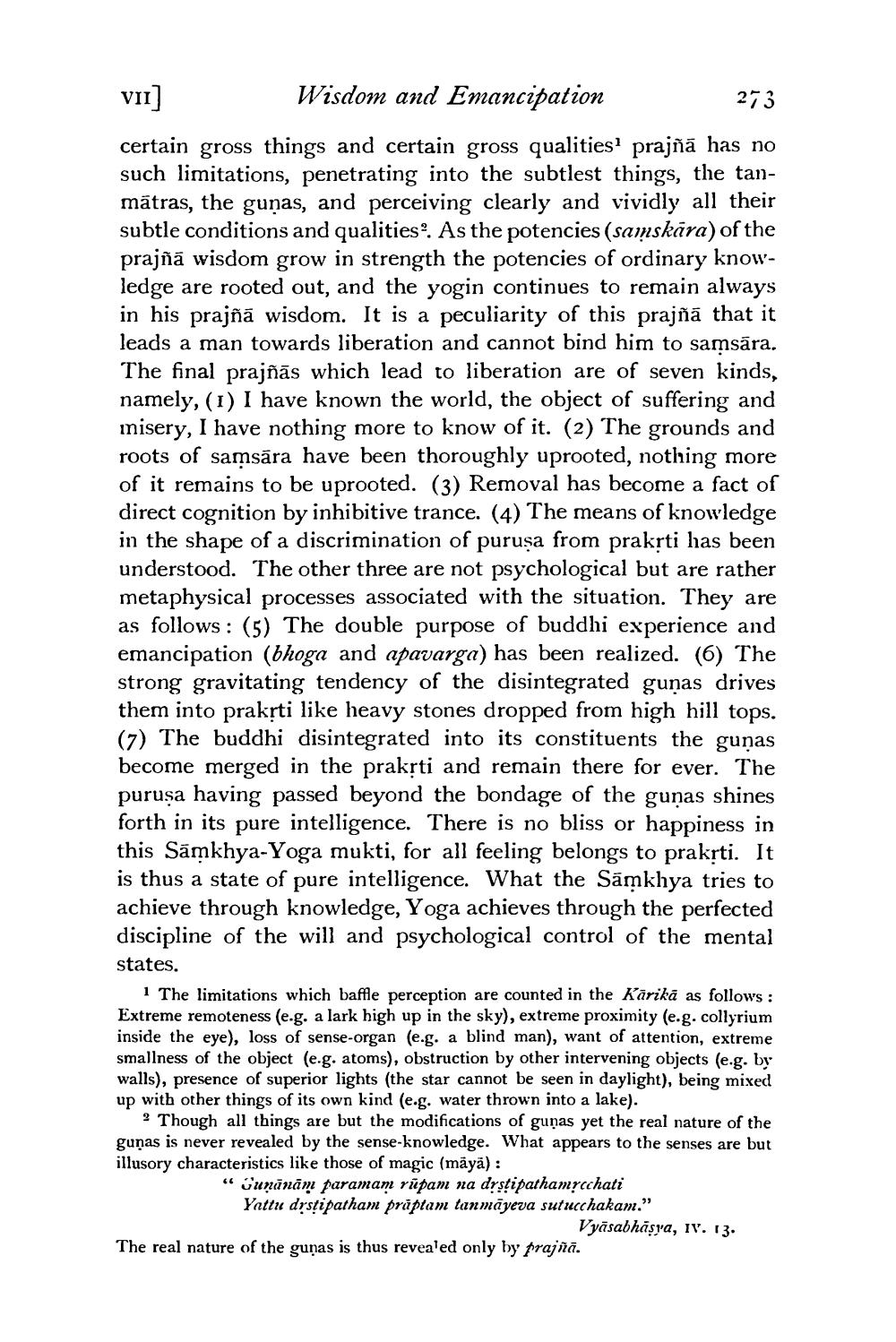________________
vii]
Wisdom and Emancipation
273
certain gross things and certain gross qualities? prajñā has no such limitations, penetrating into the subtlest things, the tanmätras, the gunas, and perceiving clearly and vividly all their subtle conditions and qualities. As the potencies (samskāra) of the prajñā wisdom grow in strength the potencies of ordinary knowledge are rooted out, and the yogin continues to remain always in his prajñā wisdom. It is a peculiarity of this prajñā that it leads a man towards liberation and cannot bind him to samsāra. The final prajñās which lead to liberation are of seven kinds, namely, (1) I have known the world, the object of suffering and misery, I have nothing more to know of it. (2) The grounds and roots of samsāra have been thoroughly uprooted, nothing more of it remains to be uprooted. (3) Removal has become a fact of direct cognition by inhibitive trance. (4) The means of knowledge in the shape of a discrimination of purusa from prakrti has been understood. The other three are not psychological but are rather metaphysical processes associated with the situation. They are as follows: (5) The double purpose of buddhi experience and emancipation (bhoga and apavarga) has been realized. (6) The strong gravitating tendency of the disintegrated gunas drives them into prakrti like heavy stones dropped from high hill tops. (7) The buddhi disintegrated into its constituents the gunas become merged in the prakrti and remain there for ever. The purusa having passed beyond the bondage of the gunas shines forth in its pure intelligence. There is no bliss or happiness in this Samkhya-Yoga mukti, for all feeling belongs to prakrti. It is thus a state of pure intelligence. What the Samkhya tries to achieve through knowledge, Yoga achieves through the perfected discipline of the will and psychological control of the mental states.
1 The limitations which baffle perception are counted in the K’arikā as follows: Extreme remoteness (e.g. a lark high up in the sky), extreme proximity (e.g. collyrium inside the eye), loss of sense-organ (e.g. a blind man), want of attention, extreme smallness of the object (e.g. atoms), obstruction by other intervening objects (e.g. by walls), presence of superior lights (the star cannot be seen in daylight), being mixed up with other things of its own kind (e.g. water thrown into a lake).
? Though all things are but the modifications of guņas yet the real nature of the guņas is never revealed by the sense-knowledge. What appears to the senses are but illusory characteristics like those of magic (māya) :
"Gunānām paramam rūpam na drstipathamscchati Yattu drstipatham prăptam lanmāyeva sutucchakam."
Vyasabhasra, IV. 13. The real nature of the guņas is thus revealed only by prajñā.




